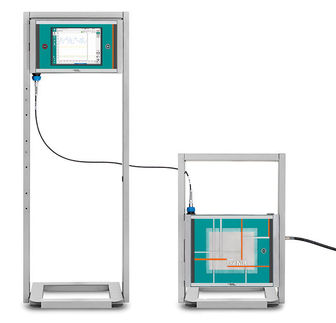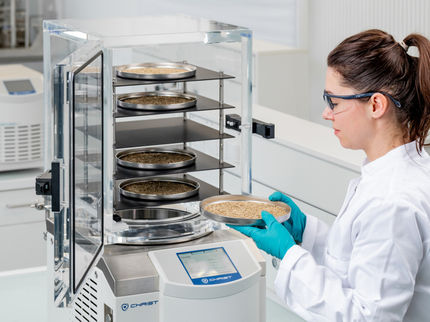| Phosphatase and tensin homolog (mutated in multiple advanced cancers 1)
|
|
|
| PTEN structure (PDB entry 1D5R visualized using PyMOL)
|
| Available structures: 1d5r
|
| Identifiers
|
| Symbol(s)
| PTEN; BZS; MGC11227; MHAM; MMAC1; PTEN1; TEP1
|
| External IDs
| OMIM: 601728 MGI: 109583 Homologene: 265
|
| Gene Ontology
|
| Molecular Function:
| • phosphatidylinositol-3-phosphatase activity
• protein serine/threonine phosphatase activity
• protein tyrosine phosphatase activity
• protein binding
• protein tyrosine/serine/threonine phosphatase activity
• lipid binding
• phosphatidylinositol-3,4,5-trisphosphate 3-phosphatase activity
• hydrolase activity
• PDZ domain binding
• inositol-1,3,4,5-tetrakisphosphate 3-phosphatase activity
• phosphatidylinositol-3,4-bisphosphate 3-phosphatase activity
|
| Cellular Component:
| • cytoplasm
|
| Biological Process:
| • regulation of cyclin-dependent protein kinase activity
• protein amino acid dephosphorylation
• lipid metabolic process
• induction of apoptosis
• cell cycle
• central nervous system development
• heart development
• cell proliferation
• negative regulation of cell proliferation
• cell migration
• negative regulation of cell migration
• regulation of protein stability
• negative regulation of apoptosis
• negative regulation of progression through cell cycle
• inositol phosphate dephosphorylation
• phosphoinositide dephosphorylation
• negative regulation of focal adhesion formation
• negative regulation of protein kinase B signaling cascade
|
|
| Orthologs
|
|
| Human
| Mouse
|
| Entrez
| 5728
| 19211
|
| Ensembl
| na
| ENSMUSG00000013663
|
| Uniprot
| na
| Q3UFB0
|
| Refseq
| NM_000314 (mRNA)
NP_000305 (protein)
| NM_008960 (mRNA)
NP_032986 (protein)
|
| Location
| na
| Chr 19: 32.82 - 32.89 Mb
|
| Pubmed search
| [1]
| [2]
|
PTEN (Phosphatase and Tensin homolog) gene is a human gene that acts as a tumor suppressor gene, which means that the protein encoded by this gene helps regulate the cycle of cell division by keeping cells from growing and dividing too rapidly or in an uncontrolled way. Mutations of this gene cause multiple advanced cancers.
The corresponding PTEN protein is found in almost all tissues in the body. The PTEN protein modifies lipids (fats) in cells by removing phosphate groups (clusters of one phosphorous and three oxygen atoms), making the PTEN protein a type of enzyme called a phosphatase. More specifically it is a phosphodiesterase and an inhibitor of the phospho-AKT pathway by removing the 3' phosphate group of phosphatidylinositol (3,4,5)-trisphosphate (PtdIns (3,4,5)P3).
The structure of PTEN (solved by X-ray crystallography) reveals that it consists of a phosphatase domain, and a C2 domain: the phosphatase domain contains the active site which carries out the enzymatic function of the protein, whilst the C2 domain allows PTEN to bind to the phospholipid membrane so it is able to de-phosphorylate (PtdIns (3,4,5)P3)
When the PTEN enzyme is functioning properly, it acts as part of a chemical pathway that signals cells to stop dividing and causes cells to undergo programmed cell death (apoptosis) when necessary. These functions prevent uncontrolled cell growth that can lead to the formation of tumors. There is also evidence that the protein made by the PTEN gene may play a role in cell movement (migration) and sticking (adhesion) of cells to surrounding tissues.
PTEN is one of the most commonly lost tumour suppressors in human cancer. During tumor development, mutations and deletions of PTEN occur that inactivate its enzymatic activity leading to increased cell proliferation and reduced cell death. Frequent genetic inactivation of PTEN occurs in glioblastoma, endometrial cancer, prostate cancer, and reduced expression is found in many other tumor types such as lung and breast cancer.
Related conditions
PTEN mutation also causes a variety of inherited predispositions to cancer.
Cowden syndrome: Researchers have found more than 70 mutations in the PTEN gene in people with Cowden syndrome. These mutations can be changes in a small number of base pairs or, in some cases, deletions of a large number of base pairs. Most of these mutations cause the PTEN gene to make a protein that does not function properly or does not work at all. The defective protein is unable to stop cell division or signal abnormal cells to die, which can lead to tumor growth, particularly in the breast, thyroid or uterus.
Other disorders: Mutations in the PTEN gene cause several other disorders that, like Cowden syndrome, are characterized by the development of noncancerous tumors called hamartomas. These disorders include Bannayan-Riley-Ruvalcaba syndrome, Proteus syndrome, and Proteus-like syndrome. Together, the disorders caused by PTEN mutations are called PTEN hamartoma tumor syndromes, or PHTS. Mutations responsible for these syndromes cause the resulting protein to be nonfunctional or absent. The defective protein allows the cell to divide in an uncontrolled way and prevents damaged cells from dying, which can lead to the growth of tumors.
Further Reading
- Li J, Yen C, Liaw D, Podsypanina K, Bose S, Wang SI, Puc J, Miliaresis C, Rodgers L, McCombie R, Bigner SH, Giovanella BC, Ittmann M, Tycko B, Hibshoosh H, Wigler MH, Parsons R (1997). "PTEN, a putative protein tyrosine phosphatase gene mutated in human brain, breast, and prostate cancer.". Science 275 (5308): 1943-1947. PMID 9072974.
- Simpson L, Parsons R (2001). "PTEN: life as a tumor suppressor". Exp Cell Res 264 (1): 29-41. PMID 11237521.
- Chu EC, Tarnawski AS (2004). "PTEN regulatory functions in tumor suppression and cell biology". Med Sci Monit 10 (10): RA235-41. PMID 15448614.
- Eng C (2003). "PTEN: one gene, many syndromes". Hum Mutat 22 (3): 183-98. PMID 12938083.
- Hamada K, Sasaki T, Koni PA, Natsui M, Kishimoto H, Sasaki J, Yajima N, Horie Y, Hasegawa G, Naito M, Miyazaki J, Suda T, Itoh H, Nakao K, Mak TW, Nakano T, Suzuki A (2005). "The PTEN/PI3K pathway governs normal vascular development and tumor angiogenesis". Genes Dev 19 (17): 2054–65. PMID 16107612.
- Leslie NR, Downes CP (2004). "PTEN function: how normal cells control it and tumour cells lose it". Biochem J 382 (Pt 1): 1–11. PMID 15193142.
- Pilarski R, Eng C (2004). "Will the real Cowden syndrome please stand up (again)? Expanding mutational and clinical spectra of the PTEN hamartoma tumour syndrome". J Med Genet 41 (5): 323-6. PMID 15121767.
- Sansal I, Sellers WR (2004). "The biology and clinical relevance of the PTEN tumor suppressor pathway". J Clin Oncol 22 (14): 2954–63. PMID 15254063.
- Waite KA, Eng C (2002). "Protean PTEN: form and function". Am J Hum Genet 70 (4): 829-44. PMID 11875759.
- Zhou XP, Waite KA, Pilarski R, Hampel H, Fernandez MJ, Bos C, Dasouki M, Feldman GL, Greenberg LA, Ivanovich J, Matloff E, Patterson A, Pierpont ME, Russo D, Nassif NT, Eng C (2003). "Germline PTEN promoter mutations and deletions in Cowden/Bannayan-Riley-Ruvalcaba syndrome result in aberrant PTEN protein and dysregulation of the phosphoinositol-3-kinase/Akt pathway". Am J Hum Genet 73 (2): 404-11. PMID 12844284.
| Hydrolase: esterases (EC 3.1) |
|---|
| 3.1.1: Carboxylic ester hydrolases | Cholinesterase - Pectinesterase - 6-phosphogluconolactonase - PAF acetylhydrolase
Lipase (Gastric/Lingual, Pancreatic, Lysosomal, Hormone-sensitive, Endothelial, Hepatic, Lipoprotein, Monoacylglycerol, Diacylglycerol)
Phospholipase (A1, A2, B) |
|---|
| 3.1.2: Thioesterase | Palmitoyl thioesterase - Ubiquitin carboxy-terminal hydrolase L1 |
|---|
| 3.1.3: Phosphatase | Alkaline phosphatase - Acid phosphatase (Prostatic)/Tartrate resistant acid phosphatase/Purple acid phosphatases - Nucleotidase - Glucose 6-phosphatase - Fructose 1,6-bisphosphatase -
Calcineurin - Phosphoprotein phosphatase (PP2A) - OCRL - Pyruvate dehydrogenase phosphatase - Fructose 2,6-bisphosphatase - Protein tyrosine phosphatase - PTEN |
|---|
| 3.1.4: Phosphodiesterase | Autotaxin - Phospholipase (C, D) - Sphingomyelin phosphodiesterase - PDE1 - PDE2 - PDE3 - PDE5 |
|---|
| 3.1.6: Sulfatase | Arylsulfatase B - Steroid sulfatase - Galactosamine-6 sulfatase - Arylsulfatase A - Iduronate-2-sulfatase - N-acetylglucosamine-6-sulfatase |
|---|
| other | Nuclease |
|---|
|







